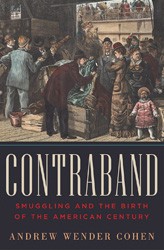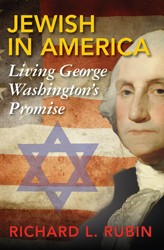In the decades after World War II, poverty among American Jews virtually disappeared except among the elderly, immigrants, single mothers, and members of very insular Orthodox groups. Jews have been proud of their upward economic mobility, and it is one of the reasons that, according to research conducted by the Pew Institute, they have become one of America’s most admired ethnic and religious groups. In Ambivalent Embrace, however, Rachel Kranson considers the fears of American Jews who believed affluence threatened Judaism and Jewishness.
Kranson’s lively and interesting book examines the numerous jeremiads of rabbis, Zionists, Yiddishists, political radicals, feminists, members of the counterculture, and academicians and intellectuals who claimed that Jews had made a bad bargain by exchanging their political radicalism, religiosity, and cultural richness for the blandness, materialism, conformity, and political conservatism of the prosperous society of suburbia. These critics of affluence argued that Jewish identity flourished only under conditions of exclusion, isolation, marginality, and poverty — and in such places as the shtetls of Eastern Europe, the immigrant neighborhoods of America’s cities (particularly the Lower East Side of New York City) and Israel during its early years. Fiddler on the Roof and books such as Leon Uris’s Exodus, Irving Howe’s The World of Our Fathers, and The Jewish Catalogue romanticized these locales, depicting them as abodes of idealism and bookishness in which the needs of the downcast were prioritized.
As Kranson notes, the major symbol for what ailed American Jewry was the modern suburban synagogue; its detractors felt that it raised superficiality and vulgarity to an art form. Particularly egregious was the lavish manner in which lifecycle events were celebrated. Kranson mentions one bar mitzvah celebration that included a three-ring circus with a live elephant, and another in which the caterer released a slew of parakeets to the amazement of onlookers.
One of the most important questions raised by Kranson’s book, and one that she does not dwell on, involves the significance of these animadversions on American affluence. In its conclusion she states that the Jews of the postwar decades acutely felt the incongruity between their “self-image as outsiders and their newfound status as white, middle-class, even privileged insiders.” But how widespread was this ambivalence and where did it lead? These critiques of American prosperity did not seem to be taken seriously by most Jews. They certainly did not slow down their ascent up the social and economic ladder, nor did many young Jews adopt a working-class identity in the urban neighborhoods from which their parents and grandparents had fled. American Jewry, as revealed in the weekly wedding announcements in the Sunday New York Times, has remained a socially and economically elite sector of America.
But perhaps, as Kranson implies, the attacks on wealth were never meant to be taken literally. Warnings about the dangers of affluence were never translated into concrete change, but on the cognitive level they did help Jews define their identity and distinguish themselves from other Americans. And, judging from their philanthropy and voting patterns, America’s Jews still do not seem to be completely comfortable in their affluence.



